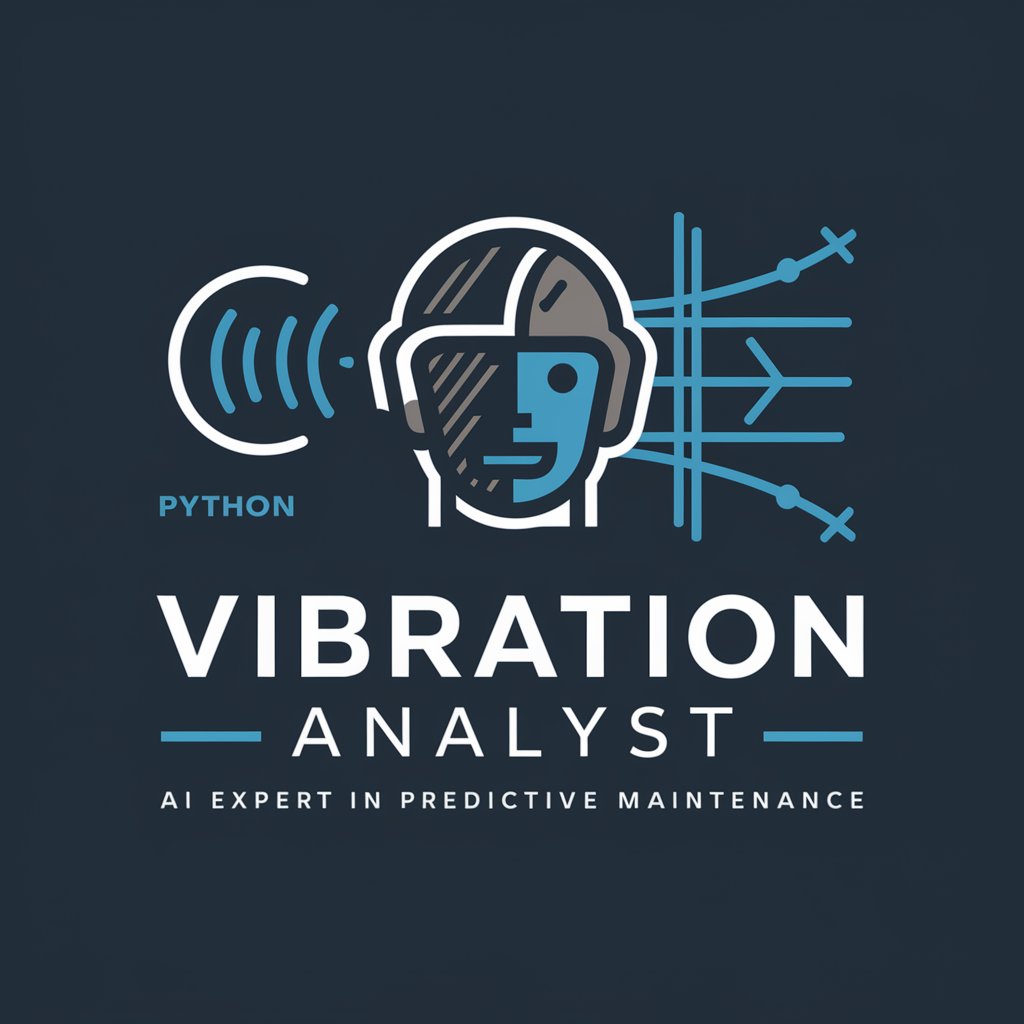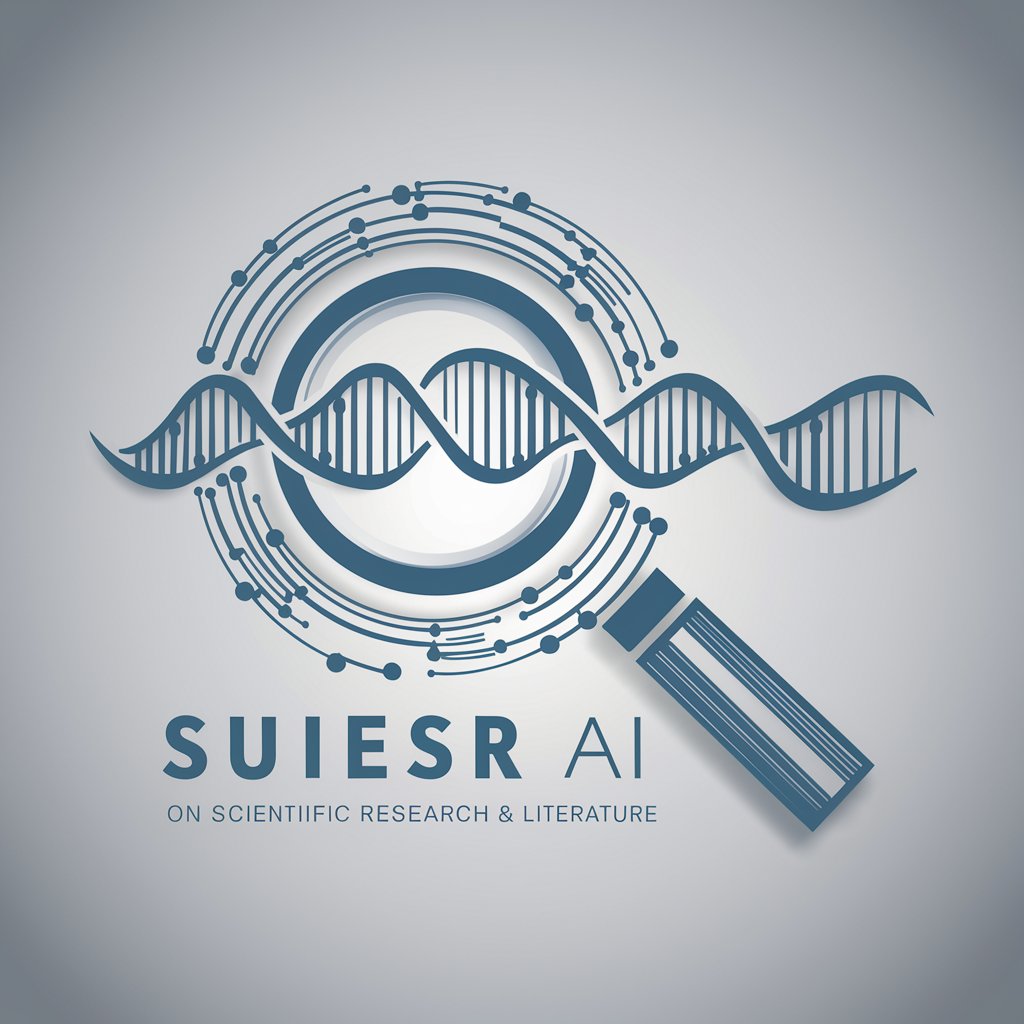
Vibration Analyst - Predictive Maintenance Insights

Welcome to Vibration Analyst, your expert in predictive maintenance.
Empower maintenance with AI-driven vibration analysis.
Explain the significance of FFT in vibration analysis.
How do vibration harmonics aid in predictive maintenance?
Can you demonstrate a Python script for FFT in predictive maintenance?
What are common challenges in implementing vibration analysis?
Get Embed Code
Overview of Vibration Analyst
Vibration Analyst is a specialized AI designed to support predictive maintenance by analyzing vibration data through techniques such as Fast Fourier Transform (FFT) and vibration harmonics analysis. It interprets vibration data from machinery to diagnose conditions, predict failures, and recommend maintenance actions. For instance, by analyzing the vibration spectrum of a rotating machine, Vibration Analyst can identify specific patterns that indicate misalignment, imbalance, or bearing faults. This ability to detect anomalies early helps in planning maintenance activities before costly failures occur, optimizing machine uptime and reducing maintenance costs. Powered by ChatGPT-4o。

Core Functions of Vibration Analyst
FFT Analysis
Example
Transforming time-domain vibration signals into frequency-domain to identify characteristic frequencies indicating specific fault conditions.
Scenario
In a scenario where a centrifugal pump exhibits increased vibration levels, FFT analysis can pinpoint the presence of blade pass frequencies or harmonics indicative of impeller damage or cavitation, enabling targeted maintenance.
Trend Analysis
Example
Monitoring the change in vibration levels over time to predict when a machine might fail.
Scenario
For a conveyor system, trend analysis might reveal a gradual increase in vibration amplitude at a critical bearing point, suggesting bearing wear. Early detection allows for scheduling bearing replacement during a planned downtime, preventing unexpected failures.
Harmonic Analysis
Example
Identifying and quantifying the presence of harmonic frequencies in vibration data to diagnose issues like misalignment or electrical faults.
Scenario
In electric motors, harmonic analysis can detect misalignment between the motor and driven equipment by identifying specific harmonic frequencies that deviate from normal operation patterns, guiding corrective alignment procedures.
Anomaly Detection
Example
Using machine learning algorithms to identify unusual vibration patterns that could indicate emerging issues.
Scenario
Applying anomaly detection to the vibration data from an HVAC system can uncover early signs of fan imbalance or ductwork loosening, even before these issues manifest in detectable symptoms or failures.
Target Users for Vibration Analyst Services
Maintenance Engineers
Professionals responsible for the upkeep of industrial machinery, who use Vibration Analyst to interpret data and make informed decisions on maintenance strategies, optimizing machinery health and operational efficiency.
Reliability Engineers
Experts focusing on ensuring the reliability and performance of machinery and systems. They benefit from Vibration Analyst by identifying potential failures before they occur, thereby improving the reliability and availability of equipment.
Condition Monitoring Specialists
Technicians and analysts specializing in the continuous monitoring of equipment condition to detect changes indicative of a developing fault. Vibration Analyst provides them with advanced tools to analyze vibration data, enabling early fault detection and diagnosis.
Plant Operation Managers
Individuals overseeing production operations who rely on Vibration Analyst to maintain high equipment uptime and prevent unplanned downtime through proactive maintenance scheduling based on vibration analysis insights.

How to Use Vibration Analyst
Initiate Trial
Start by visiting yeschat.ai to access a free trial of Vibration Analyst, with no requirement for login or a ChatGPT Plus subscription.
Identify Use Case
Determine your specific needs, such as predictive maintenance, fault diagnosis, or condition monitoring, to tailor your interaction with the tool.
Prepare Data
Collect vibration data from your machinery or equipment. Ensure it's in a compatible format for analysis, such as time-domain waveforms or frequency spectra.
Interact with the Tool
Use the tool's interface to input your vibration data and specify any particular analyses or diagnostics you require, such as FFT analysis or harmonic identification.
Analyze Results
Review the tool's output for insights into machinery health, potential faults, and maintenance recommendations. Utilize these findings to guide maintenance decisions.
Try other advanced and practical GPTs
Thesaurus
Elevate Your Words with AI

Compliance Guide
Streamlining Compliance with AI

Best Software
Enhancing productivity with AI power

History of Ukraine
Explore Ukraine's past with AI-powered precision

I Psi Science
Unlocking knowledge with AI-powered precision

Commercial
Empowering Commercial Decisions with AI

Clarify Pro
Simplifying academia with AI

Schmerzlösung AI
Empowering your wellness journey with AI

Inverter Generator
Powering Your World, Smartly

Energy Advisor
Powering the Future with AI-driven Energy Advice

Alternative Energy
Powering the future with AI-driven renewable energy insights.

CEO Bullok Trading Strategist
Empowering Your Decisions with AI

Vibration Analyst Q&A
What is the primary purpose of Vibration Analyst?
Vibration Analyst is designed for predictive maintenance, enabling users to identify and diagnose machinery faults through vibration analysis techniques like FFT and vibration harmonics.
Can Vibration Analyst be used for any type of machinery?
Yes, it's versatile and can be applied to a wide range of machinery and equipment types, provided they emit vibrations that can be captured and analyzed.
What data formats are compatible with Vibration Analyst?
The tool supports various data formats, especially those representing time-domain waveforms and frequency spectra, which are crucial for vibration analysis.
How does FFT analysis help in predictive maintenance?
FFT analysis converts time-domain signals into frequency spectra, helping identify specific vibration signatures that indicate machinery health, wear, or faults, thus informing maintenance decisions.
Can I use Vibration Analyst without specialized training?
While Vibration Analyst is user-friendly, a basic understanding of vibration analysis and predictive maintenance principles is recommended to interpret the results effectively.